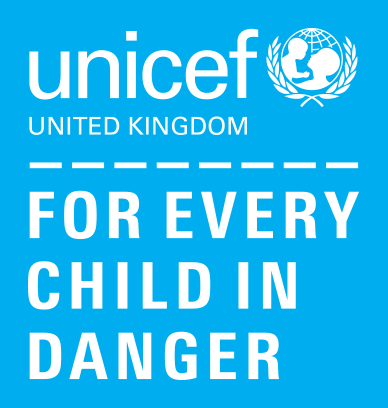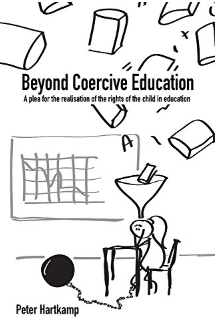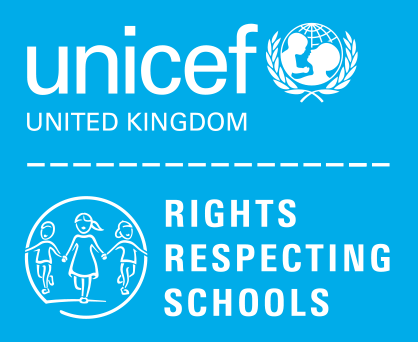Children’s Rights
Is Conventional Schooling in Breach of Children’s Human Rights?
The United Nations Convention on the Rights of the Child (UNCRC) was drawn up in 1989 to ensure that universal rights of children are upheld throughout the world. The UK signed the convention in 1990, ratified it in 1991 and it came into force in 1992.
All UN member states (with the exception of the USA) have ratified the UNCRC, making it the most widely ratified human rights treaty in history. All parliaments of these 195 countries have agreed to be legally bound by the treaty. They have a moral obligation to refrain, in good faith, from acts that would defeat the object and purpose of the treaty.
What is the UNCRC?
The Convention consists of 54 articles that cover all aspects of a child’s life. They set out the civil, political, economic, social and cultural rights that all children everywhere are entitled to. It also explains how adults and governments must work together to make sure all children can enjoy all their rights.
Every child in every school, in every country, has the entitlement to these rights, whatever their ethnicity, gender, religion, language, abilities or any other status (Article 2).

The UN agency responsible for monitoring the implementation of the UNCRC, Unicef, summarises the articles on their website.
The full UNCRC document can be found here.
In addition, children’s charity Save the Children has produced this children’s version: https://www.savethechildren.org.uk/content/dam/gb/reports/humanitarian/uncrc19-child-friendly.pdf
It’s Time for Children to Realise their Rights at School
According to the Too Much Too Soon initiative, the UK has been accused of employing inadequate provision for child rights protection after it fell from 11th to 156th place in global rankings for children’s rights within a year.
More and more people – including parents, teachers, academics and psychologists – are concerned that the school system is in conflict with children’s human rights. Peter Hartkamp, author and founder of three democratic schools is convinced that the traditional school system is damaging for many children. He says:
“Historically there are three groups in society who haven’t had their rights and freedoms – slaves, women and children. Slavery was abolished after a long struggle in the 19th century. In the 20th century, women got most of their rights. It’s now time in the 21st century that children get their rights and freedoms too.”
Peter Hartkamp

In Hartkamp’s book, Beyond Coercive Education, he says that many of the rights listed in the UNCRC are indeed realised, but with the right to a child’s development and education, something odd is happening:
“Governments do their utmost to ensure that children are in schools but what happens to the rights of the children within the school seems less important. Inside a school many of the children’s rights are violated on a large scale.”
Comparisons with Child Labour and the Workplace
As one example of many in his book, Hartkamp cites that child labour, or rather, the exploitation and abuse of children by adults, is not allowed. It is a violation of the rights of children, to force them to work long hours in unhealthy factories.
But he compares enforced stay in a school with working in a factory, and asks, “Is school so much better?” He reports that US labour inspector, Helen M Todd (1913) studied children working in harsh and difficult conditions in factories, and of the 500 children she surveyed, 412 preferred working in a sweatshop to attending school because of the “monotony, humiliation and cruelty in schools”.
While we cannot replicate this study today, (because children no longer work in factories since the introduction of coercive education), Hartkamp says we can compare the conditions in which students are working in school with conditions in which people work in today’s business workplace.
He lists many examples of how the adult workplace has become increasingly more comfortable – flexible hours, the number of breaks, ergonomic conditions etc. He says if workers are bullied, become burnt out or stressed, it is the obligation of the employer to act. If employers fail to act they can go to court.
Businesses realise that it’s in their interest to ensure that their employees are happy and can develop themselves. Happy employees tend to be more productive. But have schools realised this? Hartkamp states:
“While companies have a duty of care for the welfare of their employees, in schools it is often the children themselves who are blamed for the problems they face.
The laws and regulations that protect workers in companies are virtually absent for children at school.”
Peter Hartkamp
Comparison with Prison
While Peter Hartkamp compares school with child labour, psychologist, Dr Peter Gray compares school with prison. He says that people tiptoe around this truth because admitting it would seem cruel and would point a finger at well-intentioned people doing what they believe to be essential. He gives the definition of prison as “any place of involuntary confinement and restriction of liberty.”
Gray says that in a school – as per inmates in an adult prison – students are told exactly what they must do and they are punished for failure to comply. He then points out that actually, students in school must spend more time doing exactly what they are told than is true of adults in penal institutions. And he makes another important point that:
“We put adults in prison because they have committed a crime, while we put children in school because of their age.”
Dr Peter Gray
The Violation of Children’s Rights in School
Here are some more examples of children’s rights – as stated in the UNCRC Articles – which many people believe are being violated by our state school system. This website presents many reasons as to why they believe this, fifteen changes that are being called for, as well as a range of more progressive alternatives that an increasing number of parents are choosing for their children.
Article 2 – Protection from all forms of discrimination and punishment on the basis of… expressed opinions.
Article 3 – In all actions concerning children, the best interests of the child shall be a primary consideration.
Article 6 – States will ensure to the maximum extent possible, the development of the child.
Article 9 – The right not to be separated from his or her parents against their will.
Article 12 – The right to express views freely in all matters affecting the child, and the right to be heard.
Article 13 – The right to freedom of expression. This right shall include freedom to seek, receive and impart information and ideas of all kinds.
Article 14 – The right to freedom of thought, conscience and religion.
Article 15 – The right to freedom of association and to freedom of peaceful assembly.
Article 16 – The right not to be subjected to arbitrary interference with his or her privacy.
Article 19 – The right to be protected from all forms of physical or mental violence.
Article 23 – A mentally or physically disabled child should enjoy a full and decent life, in conditions which ensure dignity, promote self-reliance and facilitate the child’s active participation in the community.
Article 28 – The right to education. [Many people dispute that schooling is the best form of education. They believe that our current system of education is outdated and not fit for the 21st century workplace.]
Article 29.1 a – Education shall be directed to the development of the child’s personality, talents and mental and physical abilities to their fullest potential.
Article 29.1 d – Education shall be directed to the preparation of the child for responsible life in a free society, in the spirit of understanding, peace, tolerance, equality of sexes, and friendship among peoples, ethnic, national and religious groups and persons of indigenous origin.
Article 30 – A child belonging to an ethnic minority shall not be denied the right to enjoy his or her own culture.
Article 31 – The right to rest and leisure, to engage in play and recreational activities appropriate to the age of the child and to participate freely in cultural life and the arts.
Article 33 – States shall take all appropriate measures to protect children from psychotropic substances. [Students who can’t cope with the restrictive nature of school can be labelled with ADHD and put on powerful drugs, the long-term effects of which we still don’t know.]
Article 42 – Governments shall actively work to make sure children and adults know about the Convention. [The UNCRC is not currently on the National Curriculum.]
Benefits of Respecting Children’s Rights in Schools
Better protection of children’s rights in schools will lead to children who are happier and are better prepared for their future (Peter Hartkamp, 2016).
A study carried out by researchers Covell and Howe (2007 and 2008) at Cape Breton University in Canada into the effects of children’s rights education found that children who learn about their rights under the UNCRC (in a rights-consistent classroom) show:
- Increased levels of self-esteem.
- Increased perceived peer and teacher support.
- A more adult-like understanding of rights and responsibilities.
- More supportive attitudes toward children of minority status.
- More rights-respecting behaviours.
Similar results have been found in the UK. In 2003 the Hampshire Education Authority created the Rights, Respect and Responsibility (RRR) initiative, which involved a programme of whole school reform. In collaboration with Hampshire staff, the Cape Breton researchers, Covell and Howe Carried out a longitudinal study from 2005 to 2008, on the effect of the RRR programme across 16 schools. They found many benefits:
“Teachers are feeling less stressed and enjoying their classes more, and are able to see the positive effects on their pupils of the work they are doing.”
“Pupils are aware of their rights, they respect the rights of others, they feel respected, and their levels of participation and engagement in school have increased.”
“Schools in which RRR has been fully implemented emanate an atmosphere of mutual respect and harmonious functioning. They are clearly, in the words of the overarching principle of the Convention on the Rights of the Child, in “the child’s best interests.”
Covell and Howe
They also found that the positive effects of RRR are most pronounced in schools based in more disadvantaged neighbourhoods. In these areas they found a:
- Decrease in absences.
- Decrease in ‘behavioural incidents’.
- Improvement in test scores and motivation.
- Increase in self-regulation in learning and behaviour.
- Increase in parental involvement.
Covell and Howe concluded:
“It would appear that the rights education program has altered the educational experiences, and in turn, the motivations and aspirations of the pupils.”
Rights Respecting Schools Award

Validating the efforts of the RRR schools in Hampshire, in 2004 Unicef UK created the Rights Respecting Schools Award (RRSA) which encouraged the creation of similar programmes around the country. You can find out more about this on our School Support page.
Contradiction within RRSA Programmes
While the RRSA programme is a step in the right direction (towards a more humane school system), retired head teacher and long-term school inspector, Derry Hannam makes the point that the overriding requirement of the UNCRC is that the best interests of the child should always be the yardstick for its interpretation and implementation. He says:
“There is a fundamental contradiction that I would certainly have felt as a child in a ‘rights respecting’ school, between on the one hand, my “right to education…compulsory and free to all” [Article 28] – if it was experienced as subjection to testing that damaged my self confidence and self-esteem, being grouped by ability in a way that labelled me as ‘bright and gifted’ or ‘being a slow learner’, being coerced into lessons where I must attend to a compulsory curriculum, much of which I find to be uninteresting or irrelevant – and on the other hand my participation rights set out in the Convention.”
Derry Hannam
You can read Hannam’s “Review of Recent Research into Children’s Rights-Based Education in State Schools in Hampshire, England”, in our Articles and Research section.
Children’s Rights and Self-Directed Education
Many others would agree with Derry Hannam, and Peter Hartkamp in that it is hard to realise children’s rights in a coercive school system where students are not able to opt in or out of activities.
Je’anna L Clements, author of Help! My Kid Hates School and forthcoming e-book, The Child’s Right To Education has written an article for The Alliance for Self-Directed Education (ASDE) on this subject. She says:
“In the commentary provided to assist interpretation of the UNCRC, the UN clarifies that education should promote and protect “the human dignity innate in every child and his or her equal and inalienable rights… taking into account the child’s special developmental needs and diverse evolving capacities.”
It also insists upon the need for education to be “child-centred, child-friendly and empowering”, and highlights the need for educational processes to be based upon the very principles it enunciates.”
Je’anna L Clements
She believes that self-directed education (SDE) is better suited to this brief than our current mainstream model of schooling, as the origins of SDE are actively rooted in the respectful, egalitarian treatment of children. Part 2 of this series of articles is now available to read on the ASDE website. You can read more about Je’anna Clements in our interview with her in our Voices from the Sector section.
Further Resources
Beyond Coercive Education. A Plea for the Realisation of the Rights of the Child in Education, by Peter Hartkamp. You can watch the author’s TEDx below:
Alternatives to School – a 15 minute talk by Carol Black, Director of Schooling the World and Education Analyst. Her talk touches on how conventional schooling has become a human right but questions its use of compulsion and control, as opposed to education based in freedom, autonomy, consent and cooperation.
Youth Rights Day – Founded in 2021 with this letter signed by youth activists, the global Youth Rights Day takes place on 20th November, the same day that the United Nations celebrates its Convention on the Rights of the Child, with their World Children’s Day.
Youth Rights Day highlights the fact that for children’s rights (and the rights of all young people) to be truly realised, the education system/s need to be taking a self-directed approach. The day itself is envisioned as a festival of events organised by groups throughout the world to showcase the talents of young people, the contributions they have to make, and the work being done to promote youth agency.
Campaigns
Visit our Campaigns section to find out how to get involved with campaigns around children’s rights in education.

